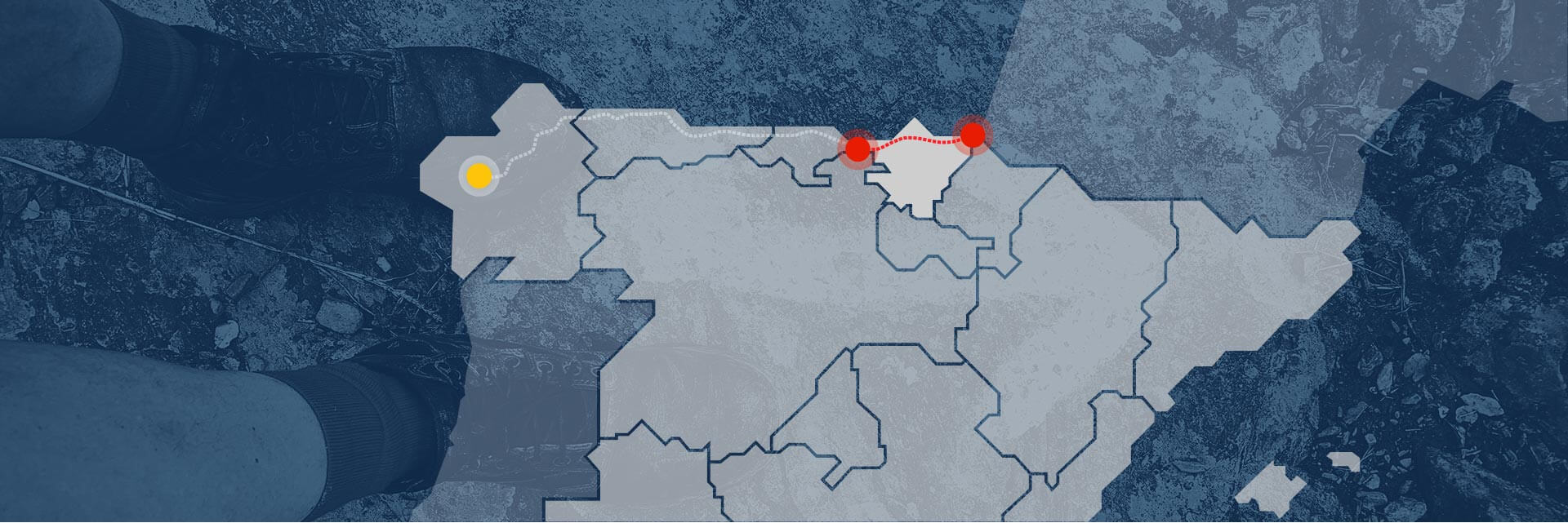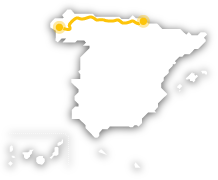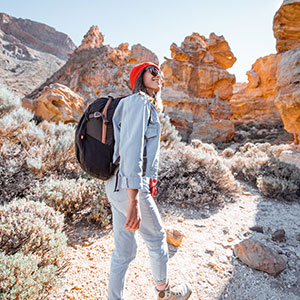
Basque Country
Approximate distance: around 175 kilometres.Recommended stages: 8 or 9.Irún is the starting point of the Northern Way in Spain, which runs through the Basque Country until the ninth stage begins in Portugalete (Bizkaia) heading towards Cantabria. This stretch of the Northern Way of Saint James may be the furthest inland, but even so, it offers lovely sea views in places like Zarautz and the ports of Getaria and Zumaia. The large cities of this part of the route are Donostia-San Sebastián and Bilbao, worth a visit for exciting attractions such as La Concha beach in San Sebastián, and the Guggenheim in Bilbao. You’ll also love the more rural atmosphere of little villages like Gernika-Lumo and Markina-Xemein.The route crossing inland Bizkaia province is one of the most rugged and hardest going on the Camino, with mountain paths and beautiful, peaceful forests.

You’ll like:- The traditional feel of a path through natural settings, meadows and lonely farmhouses.- The views of fishing villages like Hondarribia and Zarautz from the mountains overlooking the Cantabrian Sea.- The lively streets and meals of pintxos in Bilbao and Donostia-San Sebastián.- Discovering in Itziar one of the most venerated religious sculptures of the area, its black Virgin. World Heritage sites to visit: there are two on this stretch of the Northern Way. One is the prehistoric cave of Ekain, part of the Palaeolithic Cave Art of Northern Spain collective site. The other is the Vizcaya transporter bridge (Getxo).Main stops on the Northern Way of the Camino in the Basque Country: Irún – Donostia-San Sebastián – Zarautz – Deba – Gernika-Lumo – Lezama – Bilbao - PortugaleteMore information: The Northern Way in the Basque Country




























